#Lincoln Center for the Performing Arts
Text
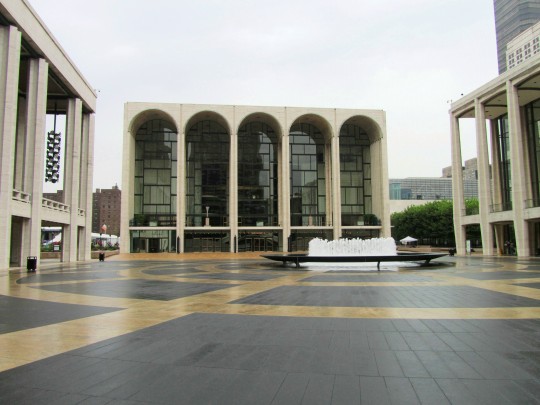
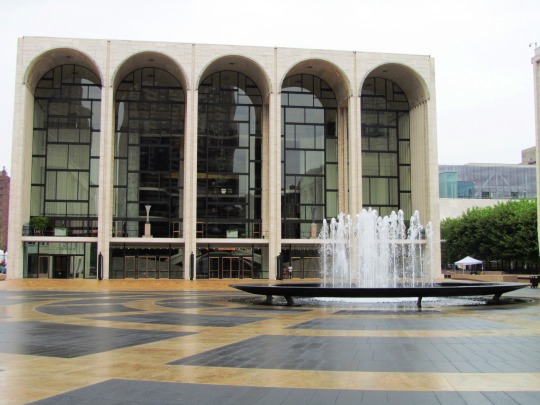


The Metropolitan Opera House opened at Lincoln Center in New York City on September 16, 1966, with the world premiere of Samuel Barber's opera Antony and Cleopatra.
#Metropolitan Opera House#Lincoln Center#travel#original photography#vacation#tourist attraction#landmark#architecture#cityscape#16 September 1966#Lincoln Center for the Performing Arts#Charles H. Revson Fountain#30 Lincoln Center Plaza#Wallace Harrison#Harrison & Abramovitz Architects#Midtown Manhattan#USA#New York City#summer 2013#exterior#anniversary#US history
3 notes
·
View notes
Text
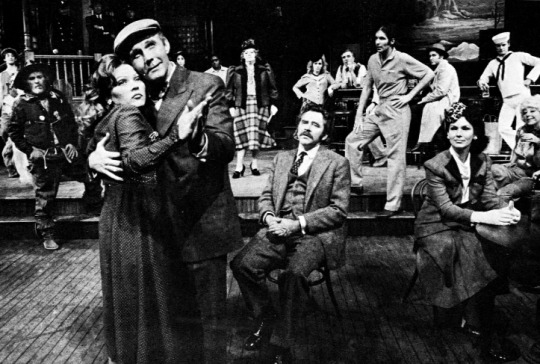
William Saroyan’s The Time of Your Life with (left to right) Susan Tyrrell, Biff McGuire, (sitting) #JamesBroderick, Priscilla Pointer, (background, on steps) Robert Symonds, and Leonard Frey.
Lincoln Center for the Performing Arts, 1969.
#susan tyrrell#william saroyan#The Time of Your Life#Biff McGuire#James Broderick#Priscilla Pointer#Robert Symonds#Leonard Frey#Lincoln Center for the Performing Arts#1969#stage#play
3 notes
·
View notes
Text



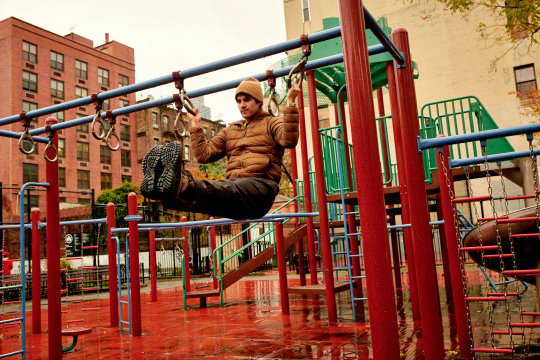


[UHQ] How Darren Criss Spends His Sundays (Photo by Gabby Jones for The New York Times)
Photo captions
"Truth is you’re always writing, whether you like it or not."
"At home."
"When we downsized to Hell’s Kitchen in October, we stumbled upon this cute, 47th Street coffee shop called Frisson," Mr. Criss said. "Been going there ever since."
"For exercise, "give me an hour and a park bench," Mr. Criss said, “and I’m good."
"Upon leaving my apartment, I encounter one of two genres of person: tourists or theater people."
"At the Café Carlyle."
#darren criss#new york times#press#photos#dec 2022#avdc @ wind creek event center#avdc @ mayo performing arts center#avdc @ the ridgefield playhouse#avdc @ the paramount#avdc @ lincoln theatre
78 notes
·
View notes
Text






A Very Darren Crissmas (Mini) Tour | Morristown, Washington, Huntington, Ridgefield, Bethlehem, Boston | December 11 - 20, 2022
[Source: ♡, ♡, ♡, ♡, ♡, ♡]
#Darren Criss#a very darren crissmas 2.0#avdc @ mayo performing arts center#avdc @ lincoln theatre#avdc @ the paramount#avdc @ the ridgefield playhouse#avdc @ wind creek event center#my favorite parts were#the red boots#the blink-182 cover#the#pretty satin shirt#and his#dancy dance#wbu?#please do not repost
11 notes
·
View notes
Text
Day Out in New York: Top 5 City Attractions

New York stands out amongst the most progressive cities in the world. Whether it is economic development or infrastructural growth, New York consistently ranks among the top metropolises globally. It is also one of the most cherished cities for tourism as it enthralls visitors with great architectural marvels. With its vibrant nightlife, trendy restaurants, historic sights, and an array of tourist attractions, New York City offers a unique and unforgettable experience for tourists. If you are planning a trip to this famous metropolis, here are the top 5 New York USA tourist attractions worth exploring.
Madame Tussauds New York
The world-famous Madame Tussauds is a worth-exploring museum in New York. Though Madame Tussaud's legacy endures through several museums globally, its Times Square franchise in New York boasts a unique presence. Visitors can explore fascinating and lifelike wax statues of leading celebrities, politicians, and eminent figures. These impeccably designed wax figures look so real that you might feel tempted to carry your favorite one home. You can delight in getting yourself clicked with these remarkable figures at the museum.
Statue of Liberty
One of the most remarkable architectural wonders, esteemed as the most glorious sights in America is the Statue of Liberty. Since 1886, the Statue of Liberty has been captivating visitors with its innovative design and powerful message of freedom. To enjoy a close-up view of the Statue, the best way is to dock on the shores of Liberty Island.
Helicopter Tours
Helicopter tours offer panoramic views of New York City. This is one of the most thrilling and highly recommended tours that one must experience.
As you ascend to higher altitudes, you are treated to breathtaking skyline views that rival the city’s towering buildings.
Broadway Shows
Is it even worth exploring the city, if you don’t catch a show on Broadway? One of the most recommended things to do in New York is to enjoy a live show on Broadway. From classic dramas to heart-wrenching tragedies and laughter-evoking comedies, Broadway caters to the tastes and preferences of every spectator.
Lincoln Center for the Performing Arts New York
While catching a Broadway show is highly recommended, so is savoring the live entertainment and theatrical performances at Lincoln Center for the Performing Arts. Book your tickets, grab a seat, and get ready for some of the most remarkable performances by talented artists. This iconic and state-of-the-art theatre stages 400 shows annually. Some of the best shows that you can enjoy here include American Songbook, Midsummer Night Swing, the Mostly Mozart Festival, and Great Performers.
Author Name
Tanya Gandhi
0 notes
Text
Q&A: The Phantom Broadway Proshot
Happy 36th Birthday to Phantom of the Opera's opening night on Broadway! We should be celebrating at the Majestic. The show never should have closed.
In order to create "new" ish POTO Broadway content, @or-what-you-will and I promised to answer your questions about the proshot on POTO Broadway's birthday. Find our summary of the Proshot here.
We got dozens of questions, which we've consolidated into 14 questions. Read them all past the cut!
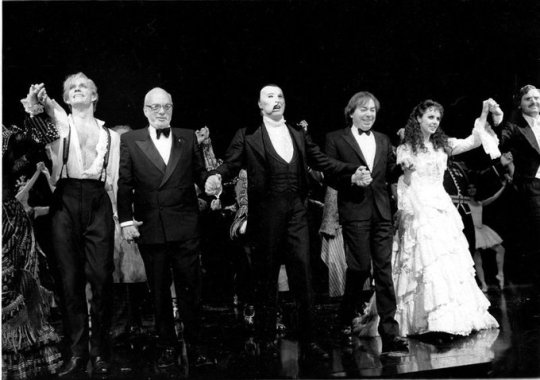
Wait, what’s the Phantom Proshot?
The Phantom Proshot is an archival copy of the original Broadway cast and production of Phantom of the Opera, filmed at the evening performance with a live audience on May 25, 1988. The New York Public Library, Theatre on Film and Tape Archive at the Performing Arts Library at Lincoln Center has archival copies of Broadway, Off-Broadway, and Regional theater going back to 1970. You can’t view currently running shows, so since Phantom ran for so long, it was under lock and key.
2. How do I see the Pro-Shot?
Pretty simple how to guide here on the NYPL website.
We are both NYPL cardholders and made a reservation in advance. You are required to state why you are accessing the recording as they exist for archival and research purpose. Both of us are published authors and researchers under our real names.

Here's a picture of the room we were in from NYPL's website. We had an appointment and were set up in a room with lots of monitors. We were seated at monitors next to each other with two sets of headphones and had one set of controls to pause/rewind etc. There are 20 monitors in the room and it was pretty full that day. This was not my first time at the TOFT and it’s always had a good number of people around.
3. Can someone get a boot of it/send me the link to it? Pleeeeease?
No. Seriously, stop asking about this. Stop joking about this. It’s not online, and never will be. All of the recordings are on digital media (videodiscs or DvDs) in the basement and only library staff get to touch them. Don’t be the person who tried to do this and ruins the archive for everyone else. You can’t even bring electronic devices into the room.
4. Why won’t they release it to the public? And who the heck does it benefit to keep this locked away?
It isn’t. It was locked away when the show was actually running. It is available to the public. We are the public! We have library cards and went to a public library and watched it for $0! It’s owned by the library so the public can see it! At the library!
The availability of us to access it now that the show has closed is what constitutes public release. There were several other phans, members of the public there to see it after us, and the library allowed them to max out the number of monitors the library allows people to view on. They had a later appointment and were watching disc one when we were on disc two. I’m sure there was someone after them too. Were we all wearing Phantom gear? Also yes.
(@or-what-you-will here) The library is not allowed to show recordings of anything currently running on Broadway, presumably because of fears about economic loss from those who own the rights to the musicals. The library does not own the rights to the musicals in the archive, and there are likely a lot of stipulations the library has to follow to be able to have recordings like this.
As someone who works in a library doing digitization work, libraries and the media they contain are very complicated. TOFT likely has the rights to show it under a very limited license, and to make copies for preservation purposes only, but things like this mean they would not be able to do anything like put it online or charge for it or do anything that would be them acting as though they owned the copyright (as opposed to the physical media). This is why when a library or archive has a book or tapes they don’t usually have the right to photocopy the entire book or digitize the entire tape and put it online (unless it is in public domain), however, if you go in person you can see it all you want. Someone else (usually the creator) owns the right to distribute or copy, and libraries and archives can get in a lot of trouble for violating it.
The copyright is still owned by the holders of each respective musical’s copyright. It’s essentially like when you buy a DVD and you are technically not supposed to copy that DVD but you can invite your friends over to watch it at your house. Copying it and distributing it violates copyright. Putting it online violates copyright. If the library violated copyright it would likely lose the ability to archive musicals altogether. If you copied the DVD it would be a lot harder to find out who put it up because the DVD is owned by lots of people, though you could still be prosecuted by the law. If the library did, they would know immediately who did it because they are presumably the only ones with a copy of this recording.
Likewise if someone took a bootleg recording of a show and distributed it, the copyright holders wouldn’t know it existed. If they found out that individual would then be eligible to be prosecuted under the law. Because the library is a public institution, if they were found out to be doing this, it would be the library itself that would get in trouble and it would damage their reputation, their funding, and quite possibly the funding and reputation of libraries around the world. A lot of this is done on trust. The copyright holders trust the library as a public institution and the library has a lot more stakes in the game than a single person recording the show and distributing it.
It’s a very tenuous agreement at times, and likely the library is only allowed to even record because there are so many protections in place and they have a history of enforcing these rules. These agreements also usually cover digitization and preservation, but again, violating them could have those abilities taken away as well. It’s all tied up in copyright law and the library has no control over that. I have talked to archivists where I live who have to record performances with tape over the lens because it’s considered for preservation and they want to make sure it cannot be possible to profit off of it in any way.
When the show goes into public domain they will be able to put it online all they want without fear of repercussions, but until then, unless those agreements change, we are all limited by the whim of the copyright holders.
5. Hello! Is the pro shot you watched what this clip is from https://www.instagram.com/reel/Cp2_80CJqI3/?igsh=MWNja2wwYWw4OHUwbw== ?
I know all of us here on Tumblr were freaking out that they maybe had a copy of the pro shot when this came out. Thank you! (@imstillhere-butallislost)
Not the proshot, it's a press reel. It has its own cool story though! Answered this here.
6. How good of a shot was it? I know you said ProShot but is it a ProShot like Hamilton or just a camera recording the whole stage at once?
I’d definitely say it was Hamilton pro-shot quality as to what was available at the time between image quality and mixing up of close ups and wide shots. I’ve watched other proshots and many just park a camera in the back of the orchestra and call it good. Cats in particular had multiple cameras but just did close-ups when they felt like it, not when it made sense or added anything. As @or-what-you-will explained in their re-blog, Phantom was one of the first proshots where they had a soundboard plug in, and let me tell you, with the exception of a few moments in Act 1 where Sarah Brightman maxes out her mic, the sound was delicious. Have we talked about how Judy Kaye is singing over the overture (yes, that’s Judy Kaye, original Carlotta, warming up!)? Or that you can hear every single word of Notes I and Prima Donna and Notes II, which usually just sounds garbled because everyone is singing over one another? Actually hearing words that I sort of know exist changed my experience of the show for me.
7. How did the tempo seem, compared to the pace of the show at the end of its run? I saw the show a few times in the last few years, and the music seemed significantly faster in person than it sounded on the London cast recording. I’ve always wondered if that was just a difference between the London and NY productions, or if the tempo just sped up over the years.
Uh…normal pace??? I’ve watched a lot of boots and most solidly clock in 2:15 of run time. This was no different. There are definitely some that run a little faster. London during Earl Carpenter’s 2023 run was notorious as he had to catch a train. It does seem to have settled back out. I will say, the music does always feel more intense in person because the whole place just vibrates.
8. I'm curious about the comment about the Ratcatcher? I think I remember that character from a film adaptation, but was he ever in the ALW musical? (@lord-valery-mimes)
Yes, Ratcatcher is still in the musical, even now. It’s a blink or you miss it type of moment. If you hear a thud and a scream right before Madame Giry tells Raoul “He lives across the Lake, Monsieur”, the thud is the ratcatcher running across the travelator.
9. Does Christine really recognize the Phantom in PONR from his boner?
No, but at this point she probably already know it’s him and has been trying to get through the scene, but definitely acts surprised because, well, that’s surprising. But it’s definitely the moment where the Vibes Are Officially Off.
10. Can Sarah Brightman act?
Yes! All three of the trio have far more nuanced performances on stage. Sarah doesn’t act the way that we do see many later Christines (including late 80s and early 90s Christines), but she absolutely created the blueprint for the role. Her “Wishing You Were Somehow Here Again” is missing some soul, but at the end of the day she was one of a kind, and she made some very strong acting choices.
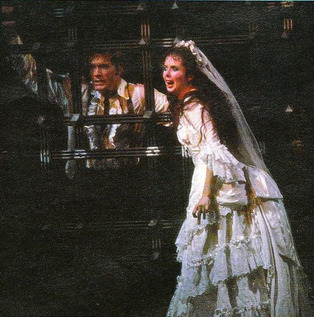
11. there anything unexpected? Any interpretation that stood out to you and particularly striking but didn’t stick around as others took on the roles and put their own spin on things?
Guys, I want to talk about Steve Barton as Raoul. The man made choice, after choice, after choice. And yet we have had so many Raoul’s that are kind of just strutting about looking pretty. Some seem to even forget they’re onstage during Final Lair. It can be such a juicy role if the actors choose to make it that way but so few do.
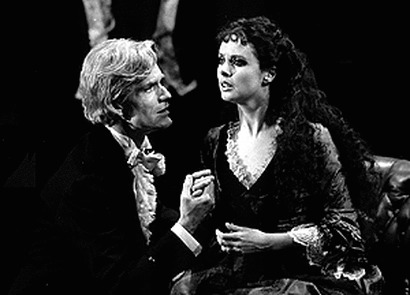
Besides some small details I mentioned, the show did maintain its integrity through its 35 year run, which is truly remarkable.
(@or-what-you-will here) Seconding what Flag said, Steve Barton brought so much more to the role than I’m used to seeing, and it really opened my mind to what Raoul could be.
The blocking in PONR did surprise me, I knew they had changed it but I hadn’t realized how much. I always found the kind of pinwheeling arm thing Christine does with the phantom strange, so it was a pleasant surprise to find that they didn’t do that at all, the embrace from behind made more sense to me.
I also found after she took his hood off no one really ran out, the phantom and Christine got to have their moment. The blocking where they (the managers and Raoul) run out and tell Christine to stay makes no sense with their motivations to stop him. The more recent blocking where Christine motions them to stay in place as the phantom sings the All I Ask of You Reprise makes way more sense with the characters’ motives and matches this original blocking much more.
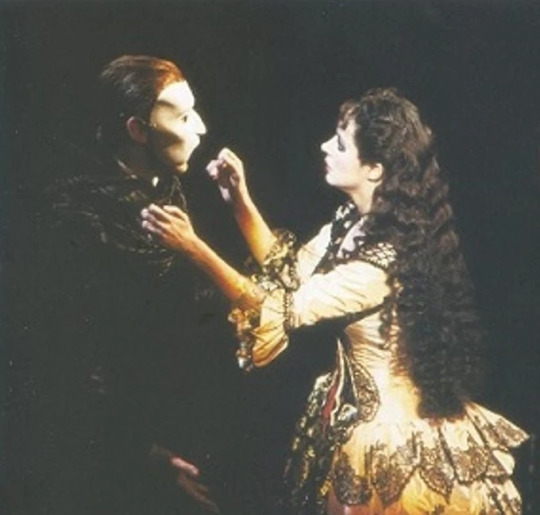
12. Also are you truly working on a research project? If so, how is progress and where might we find your final results when it’s complete?
To quote Dr. Who, “Spoilers.” Yes, always. Both of us have day jobs that have us doing research, but I can’t promise I’ll put it on here when complete since I keep fandom and real life separate. Sorry to dodge this one but getting into specifics about this starts to identify us.
(@or-what-you-will here) Seconding what Flag said.
13. Hi there, I was wondering if I could ask you a general question about the NPL’s archive. Something about the language on their website made it sound like viewers could only watch a recording “once”. I wasn’t sure if that meant “once per visit” (i.e. you can’t sit there for 8 hours restarting the tape every time it ends) or “once” as in forever (like, once you’ve watched a recording you are never allowed to request it again). Did you have any clarification? I wasn't sure if the librarians explain the policies when you arrive at your appointment. Thank you for providing so many details about the Phantom pro-shot and offering to answer our questions! That's really kind of you!
You’re welcome! So if there’s nobody after you, you can hang out with the media as long as you want. However, we did have another group come in about 90 minutes after us. That gave us enough time to watch both acts with all the rewinds we wanted. We watched PONR and parts of Final Lair like five times. On a previous TOFT trip I watched two shows and was there for like six hours. The prohibition is on coming back and watching the recording again. I have no idea how strict they are about this, although I suspect it’s to keep people from monopolizing certain media. Would I want to try to watch the proshot again in the future? Probably! I know there’s stuff I missed, or I’d see something different depending on what I’m working on. The TOFT is also an absolutely incredible resource and I have so many other shows I’d like to check out.
(Will here) They do log on your library account when you visit that you visited and what you saw. However, if you have accessibility needs that would require you to watch in multiple viewings or something along those lines, I would talk to them about it, because I’m sure they’d be able to work with you to figure out something so you wouldn’t have to sit through the whole thing in one shot.
14. > Barton Raoul’s “There is no Phantom of the Opera” comes off more as “Christine this is just some dude” vs “he doesn’t exist at all.”
Could you elaborate on this part? I'm having trouble imagining how that would be conveyed. (also, thanks for sharing your notes on the procast!) @clutzyangel
You're welcome! Yes, he's telling Christine that the Phantom is a human, flesh-and-blood man, not some fantastical creature. I've seen many Raouls who seem to try to convince Christine that the Phantom doesn't exist at all. Barton's Raoul seems to understand that he's a man with ulterior motives possibly duping Christine.
And he's not wrong.
#phantom of the opera#poto#alw phantom#phantom proshot#happy birthday phantom broadway#phantom broadway#michael crawford#sarah brightman#steve barton#judy kaye#andrew lloyd webber#nypl#research#I wish Phantom were still be on broadway#we should all be wilding out at the majestic
154 notes
·
View notes
Text
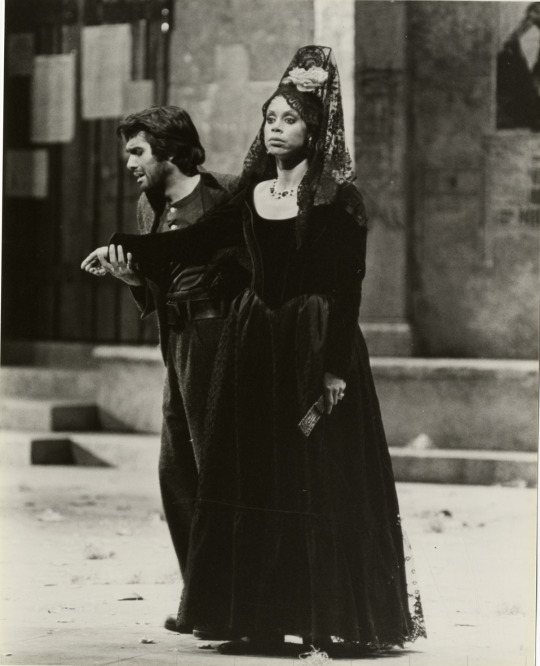
View of mezzo-soprano Maria Ewing as Carmen and Luis Lima as Don Jose in Bizet's opera, "Carmen." Label on back: "Press Department, Metropolitan Opera, Lincoln Center, New York City 10023. Luis Lima as Don Jose and Maria Ewing as Carmen in the final act of Bizet's 'Carmen.'"
E. Azalia Hackley Collection of African Americans in the Performing Arts, Detroit Public Library
#maria ewing#carmen#luis lima#opera#music#bizet#metropolitan opera#opera singer#detroit public library
46 notes
·
View notes
Text
The Story of the Original "Tea" Dancer
There was a delightful story in the Times on February 4th about George Lee, on whom Balanchine created the Tea variation in The Nutcracker. Here it is.
From Ballet to Blackjack, a Dance Pioneer’s Amazing Odyssey
George Lee was the original Tea in “George Balanchine’s The Nutcracker.” A documentary filmmaker found him and a lost part of ballet history in Las Vegas.
By Siobhan Burke
Feb. 4, 2024
Among the blaring lights and all-hours amusements of downtown Las Vegas, in a sea of slot machines at the Four Queens Hotel and Casino, George Lee sits quietly at a blackjack table, dealing cards eight hours a day, five days a week, a job he’s been doing for more than 40 years.
Lee, 88, was likely in his usual spot when the filmmaker Jennifer Lin was sifting through old photos at the New York Public Library for the Performing Arts in 2022, wondering what had become of a dancer with a notable place in ballet history. Pictured in a publicity shot for the original production of “George Balanchine’s The Nutcracker,” in the role known as Tea, was a young Asian dancer identified as George Li.
For Lin, a veteran newspaper reporter turned documentarian, the picture raised intriguing questions. In 1954, when the photo was taken, it was rare to see dancers of color on the stage of New York City Ballet, the company Balanchine co-founded. Who was this young man, this breaker of racial barriers, this pioneer? Was he still alive? And if so, what was he up to? “I became absolutely obsessed with trying to find out what happened to George Li,” Lin said in a video interview.
In just over a year, that obsession has blossomed into a short film, “Ten Times Better,” that chronicles the unexpected story of Lee’s life: from his childhood in 1940s Shanghai, where his performing career began; to a refugee camp in the Philippines, where he fled with his mother, a Polish ballet dancer, in 1949; to New York City and the School of American Ballet, where Balanchine cast him in “The Nutcracker” to “Flower Drum Song” on Broadway, his first of many musical theater gigs; and ultimately, to Las Vegas, where he left dance for blackjack dealing in 1980. (He changed the spelling of his last name in 1959, when he became a United States citizen.)
The film will have its premiere on Feb. 10 as part of the Dance on Camera Festival at Film at Lincoln Center. Lee, who last visited New York in 1993, will be in town for the occasion, an opportunity for long-overdue recognition.
“So many years I haven’t done ballet,” Lee said over coffee at the Four Queens on a recent Sunday, after his shift. “And then suddenly Jennifer comes and tries to bring everything up. To me, it was like a shock.”

George Lee today. He has been a blackjack dealer in Las Vegas for more than 40 years. Photo: Saeed Rahbaran for The New York Times
But Lin’s interest has been welcome. “Jennifer is so perfect, she knows exactly everything,” he said. “She knows my background more than I do.”
Lin was not the only one who had been searching for Lee. In 2017, while organizing an exhibition on “The Nutcracker,” Arlene Yu, who worked for the New York Public Library at the time and is now Lincoln Center’s head archivist, was puzzled by the relatively few traces of him in the library’s vast dance collection.
“I think I’d tracked him down to 1961, but after that, it was really hard to find anything,” she said. “Whereas if you look at some of his peers in ‘The Nutcracker’ in 1954, they went on to careers where there was a lot more documentation.”
Lin’s fascination with Lee emerged through her work on another film, about Phil Chan and Georgina Pazcoguin, the founders of Final Bow for Yellowface, an initiative focused on ending offensive depictions of Asians in ballet. The role of Tea, a divertissement historically rife with such stereotypes—in Balanchine’s canonical version of “The Nutcracker” and others—has been a flashpoint in those efforts.
Chan, too, had been struck by the 1954 images of “The Nutcracker,” which he came across during a library fellowship in 2020.
“I’m like, wait, there’s actually a Chinese guy,” he said — as opposed to a non-Chinese dancer with the saffron makeup or heavily painted eyes or even the artificial buck teeth worn in some old productions. “Who is this guy? And why do I not know about him?”

The "Tea" variation in The Nutcracker at City Ballet in 2015. The dancers are Ralph Ippolito, Claire Von Enck, and Baily Jones. Photo: Andrea Mohin for The New York Times
Lee, in his heyday, was a dancer to know. At just 12, he was already winning public praise. In a preview of a recital of the King-Yanover School in Shanghai, the North China Daily News called him an “extremely promising young Chinese boy, whose technique is of a very high standard.” A reviewer wrote that he “already may be said to be the best Chinese interpreter of Western ballet.” (Lee saved these newspaper clippings and shared them with Lin when they eventually met.)
Born in Hong Kong in 1935, Lee moved to Shanghai with his mother in 1941, when Shanghai was under Japanese occupation. During World War II, his father, a Chinese acrobat, was in Kunming in western China; he died in an accident on his way to visit Lee in 1945.
Lee’s mother, Stanislawa Lee, who had danced with the Warsaw Opera, was his first ballet teacher; as a child, he would follow along with her daily barre exercises. Shanghai had a significant Russian population, and with that a robust ballet scene. To earn money, Stanislawa arranged for her son to perform in nightclubs—“like a polka dance, or Russian dance, or sailor dance,” Lee said. The clubs would pay them in rice.

Little George Li in his Shanghai days. Photo: George Lee private collection via the NY Times
Fearing the Chinese Communist Party’s takeover in 1949, the two evacuated to the Philippines. An expected four months as refugees turned into two years. In 1951, an American friend of Lee’s father sponsored them to come to New York, where he introduced Lee to the School of American Ballet, City Ballet’s affiliated school.
As Lee narrates these twists and turns in the film, one memory anchors his recollections. Before they immigrated, his mother issued a warning. “You are going to America, it’s all white people, and you better be 10 times better,” he recalls her saying. “Remember that: 10 times better!”
The footage of Lee in his 20s suggests he took that advice to heart. In television appearances — with the company of the ballet star André Eglevsky, and in a number from “Flower Drum Song” on the Ed Sullivan Show — his power and precision dazzle.
“He was good; he was really good,” Chan said. “Clean fifth, high jump, polished turns, stick the landing—the training is all there. He’s already 10 times better than everybody else.”
In a 1979 interview heard in the film, the former City Ballet soloist Richard Thomas, who took over the role of Tea, raves about Lee’s peerless acrobatic jumps: “He was wonderful! Balanchine choreographed a variation for him that none of us have ever been able to equal.”
As Lee remembers it, Balanchine spent 15 minutes with him in the studio. “He said, ‘What can you do good? Show me what you can do good,’ so I show him something,” Lee said. “I did things like splits and double turns, down and up, turn again like a ball, and that’s it. He picked up some things and put them together.”
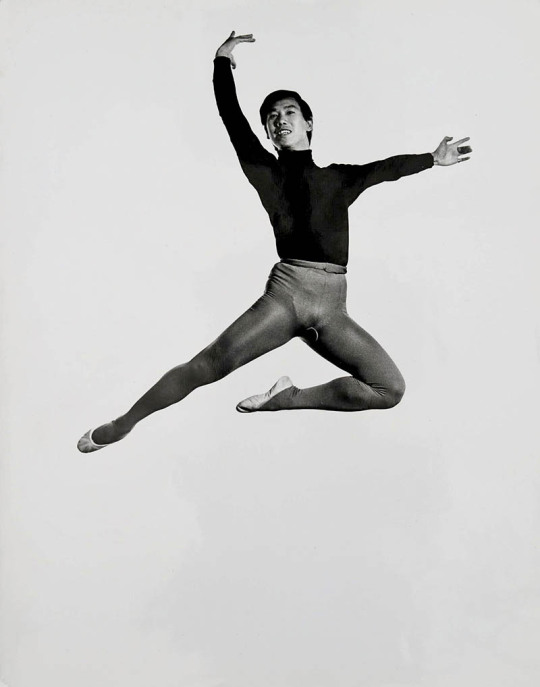
George Li as a student at the School of American Ballet. Photo: George Lee private collection via the NY Times
He recalled that during a “Nutcracker” dress rehearsal, the City Ballet makeup artist put him in full yellowface, and Balanchine insisted he take off the makeup. “He is Asian enough! Why do you make him more?” he remembers Balanchine saying. Lee was costumed in the Fu Manchu mustache, queue ponytail and rice paddy hat often associated with the role, now widely critiqued as racist caricatures. But he said he didn’t take offense. “Dancing is dancing,” he said.
Lee performed in “The Nutcracker” as a student; he was never invited to join City Ballet. But he clearly excelled in his classes and onstage. For that, he credits his strong foundation of Russian training in China — and his mother’s exacting standards. He can still see her standing in the studio doorway at the School of American Ballet, observing closely.
“She was watching the class and then would go home and tell me, ‘You did this wrong or that wrong, you got to do it this way,’” he said. “So I really worked hard, and I was good.” (His favorite teacher at the school was the demanding Anatole Oboukhoff: “He always wanted more, and that’s why I liked him very much.”)
To make a living Lee turned to musical theater, performing in shows like “Baker Street” on Broadway and the cabaret “Carol Channing with her 10 Stout-Hearted Men,” which opened in London. He pieced together jobs for more than 20 years, often unsure of what would come next.

Lee in flight in a production of “Flower Drum Song” in Las Vegas in the early 1960s. Photo: George Lee personal collection via the NY Times
He was dancing in a Vegas revue, “Alcazar de Paris,” now in his 40s, when a blackjack dealer friend suggested he go to dealer school. “I can’t dance all my life,” he remembers thinking. He decided to give dealing a try and soon landed a job at the Four Queens. Aside from four years at another casino, he has worked there ever since.
In December 2022, he got a voice mail message from Lin. With her reporting skills and some crucial assists from Yu, she had determined that he lived in Las Vegas. Of the five phone numbers she found for George Lees, four led nowhere; his was the last she tried.
When they finally connected, she put her other project on hold to focus on his story; she and her small creative team had a final cut by November. “George is 88, and I wanted him to be able to enjoy this moment, where people recognize him for his dancing,” she said.
As he prepares to return to New York, Lee said he felt gratified, most of all, for his mother.
“I’m proud for her that I didn’t let her down,” he said. “It makes me feel better to look up at her and say: ‘Look, mother, now you see what’s happening, what you did for me. You gave me all the good foundation, everything. Through you, I’m here now.’”

George Lee today. Photo: Saeed Rahbaran for The New York Times
#Balanchine#George Lee#George Li#Nutcracker ballet#Balanchine's Nutcracker#Asian stereotypes#Nutcracker Chinese Dance#New York City Ballet#NYCB#Ten Times Better#ballet film#Saeed Rahbaran#Andrea Mohin
21 notes
·
View notes
Text

🗣Only 28 days Away USA‼️
See Wednesday 13 performing a full set of Murderdolls songs LIVE this October-December
Support from @geminisyndrome @infectedrain_official and @blacksatellite
🗣Tickets and VIPS on sale NOW through the venues.
Officialwednesday13.com
Fri 20th Oct - LOS ANGELES, CA - The Whisky
Sat 21st Oct - LAS VEGAS, NV - Count’s Vamp’d
Sun 22nd Oct - RENO, NV - Virginia Street Brewhouse
Tue 24th Oct - PORTLAND, OR - Bossanova Ballroom
Wed 25th Oct - SEATTLE, WA - El Corazon
Fri 27th Oct - ROSEVILLE, CA - Goldfield Trading Post
Sat 28th Oct - SAN JOSE, CA - The Ritz
Sun 29th Oct - SAN DIEGO, CA - Brick By Brick
Tue 31st Oct - PHOENIX, AZ - The Nile Theater
Wed 1st Nov - ALBUQUERQUE, NM - Launch Pad
Fri 3rd Nov - DALLAS, TX - Sundown At Grenada
Sat 4th Nov - HOUSTON, TX - Warehouse Live
Sun 5th Nov - AUSTIN, TX - Come And Take It Live
Mon 6th Nov - Tulsa OK- Shrine
Tue 7th Nov - LAWRENCE, KS - The Bottleneck
Thu 9th Nov - MINNEAPOLIS, MN - Skyway Theater
Fri 10th Nov - MADISON, WI - The Annex
Sat 11th Nov - JOLIET, IL - The Forge
Sun 12th Nov - BLOOMINGTON, IL - Castle Theater
Tue 14th Nov - RACINE, WI - Route 20
Wed 15th Nov - FLINT, MI - Machine Shop
Thu 16th Nov - CLEVELAND, OH - The Foundry
Fri 17th Nov - PITTSBURGH, PA - Crafthouse
Sat 18th Nov - LITITZ, PA -Mickeys Black Box
Sun 19th Nov - CLIFTON, NJ - Dingbats
Wed 22nd Nov - SPARTANBURG, SC - Ground Zero
Fri 24th Nov - WINSTON-SALEM, NC - Millennium Center
Sat 25th Nov - RICHMOND, VA - Canal Club
Sun 26th Nov - LEESBURG, VA - Tally Ho
Tue 28th Nov- Atlanta Ga - Masquerade
Thu 30th Nov -KNOXVILLE, TN- The Concourse
Fri 1st Dec - LOUISVILLE, KY - Headliners Music Hall
Sat 2nd Dec - COLUMBUS, OH - The King Of Clubs
Sun 3rd Dec - INDIANAPOLIS, IN - Hi Fi Annex
Tue 5th Dec - DES MOINES, IA - Lefty’s Live Music
Wed 6th Dec - LINCOLN, NE - Bourbon Theater
Fri 8th Dec - DENVER, CO – Oriental Theater
Sat 9th Dec - COLORADO SPRINGS, CO - Black Sheep
Art by @jonnybush
21 notes
·
View notes
Note
I just found out about the 1980(?) production of Amadeus starring Tim Curry and Ian McKellan. Do you know if any recordings of it exist?
Yeah, but watching it involves going to the Lincoln Center Performing Arts Library and passing yourself off as a researcher.
#god DAMN the ephemeral nature of theatre god damn it all to hell#that last part isn't as difficult as you think though#amadeus#anonymous#assbox
63 notes
·
View notes
Text
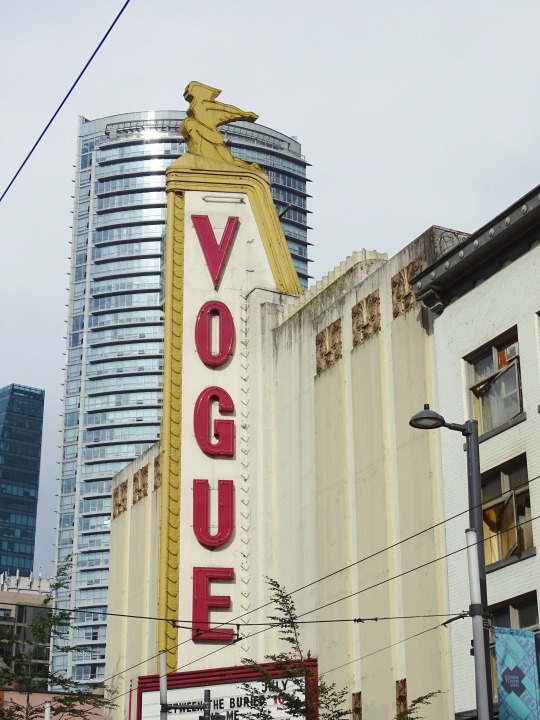


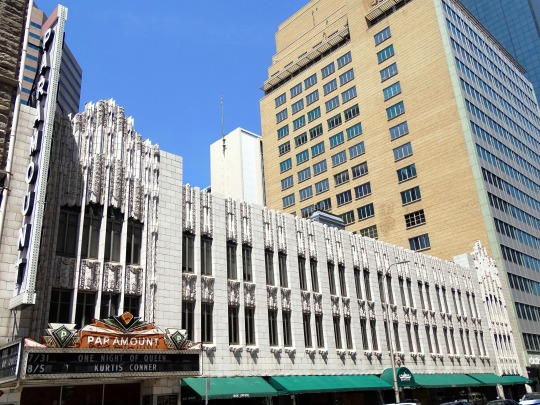
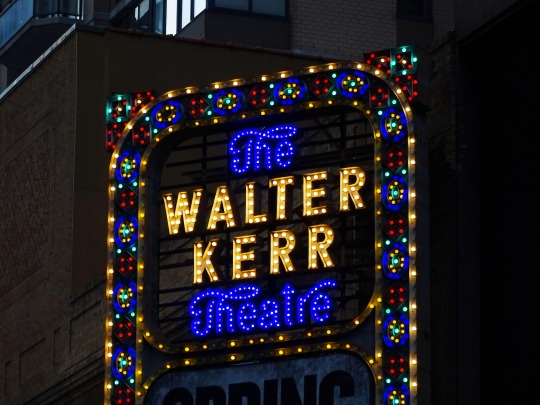
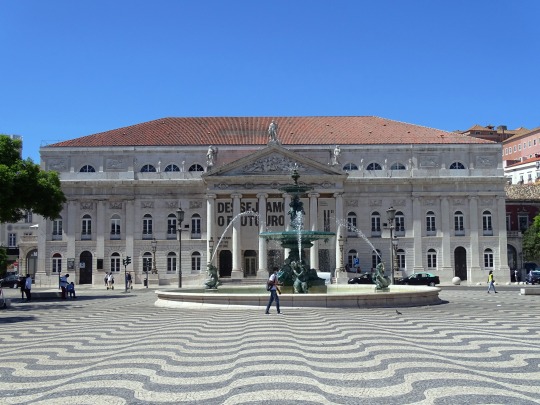
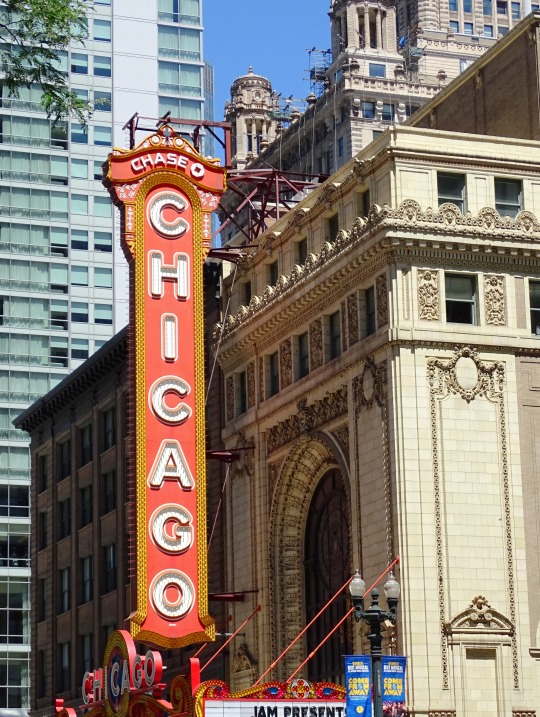

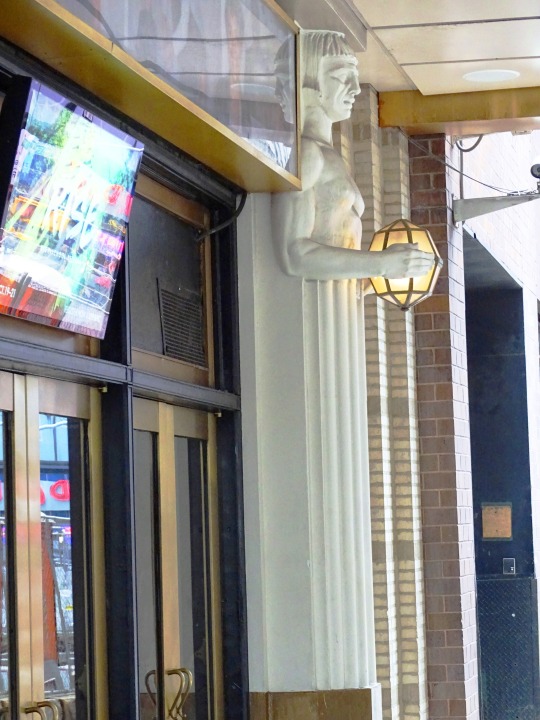

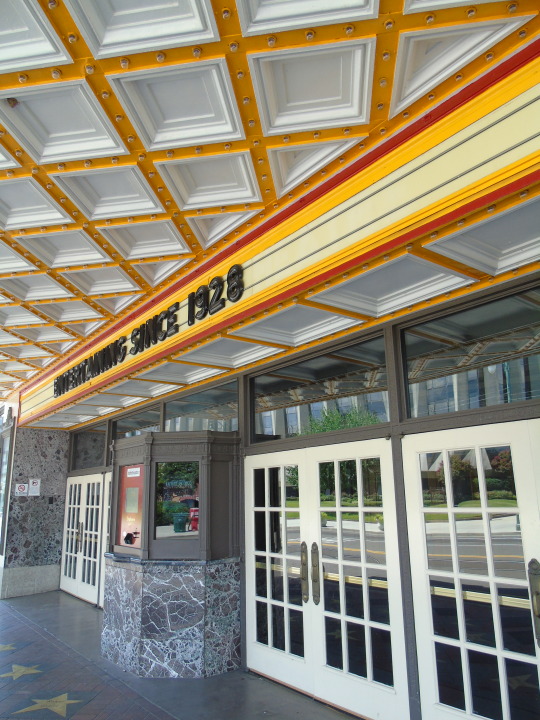
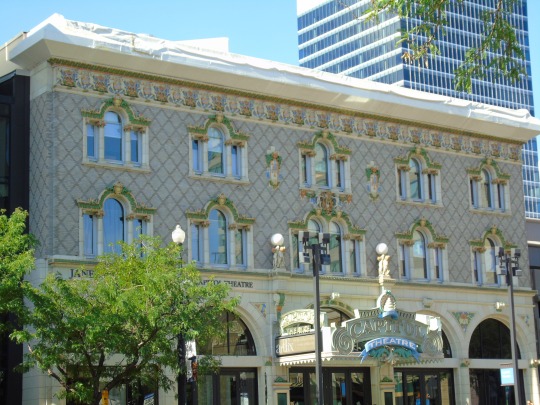
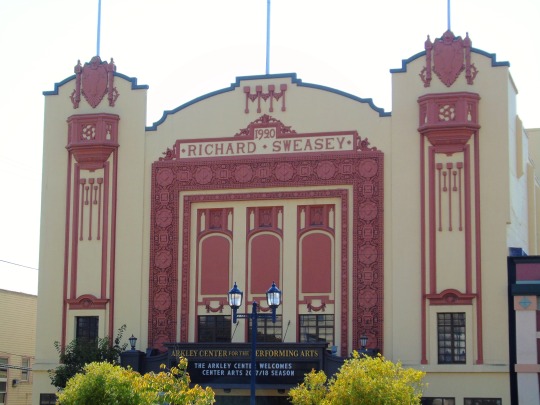




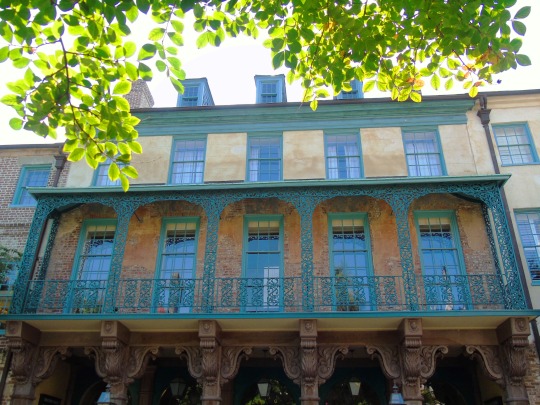
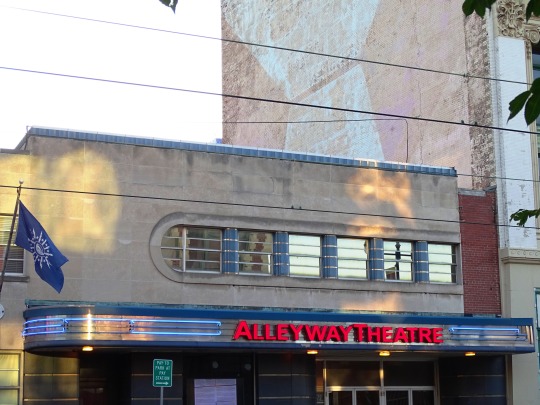
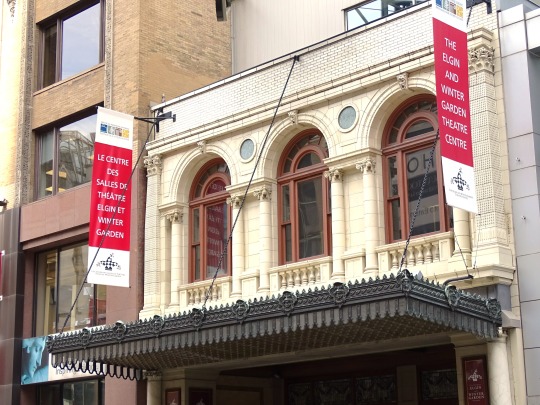







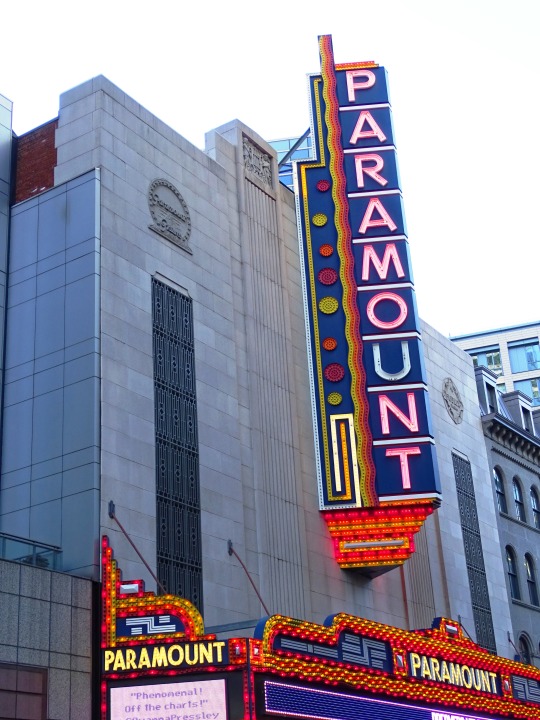
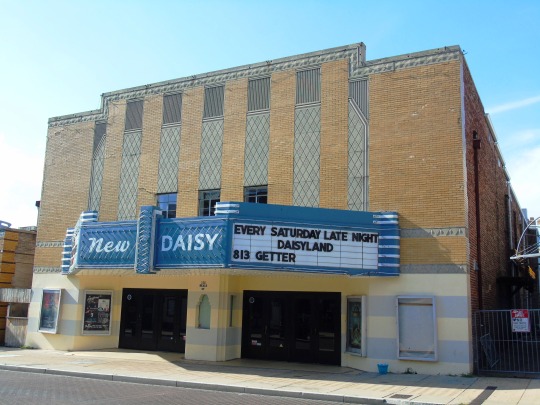
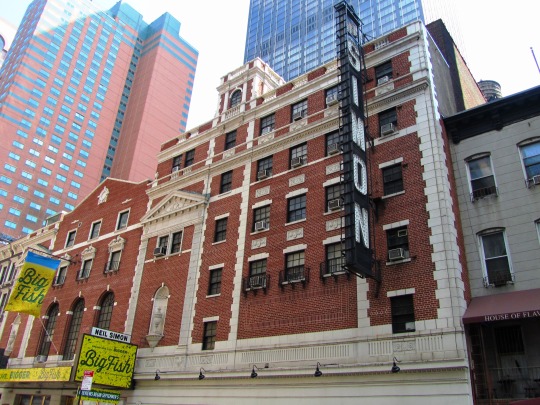
World Theatre Day
Magical places where stories come to life, the stage is a portal to other worlds, transporting audiences by the power of live performance.
Dating back a few thousand years, theatre is a unique and interesting part of culture that has certainly evolved over time. The word “theatre” gets its roots from an ancient Greek word that means “a place for seeing”, and that definition continues to be meaningful today. Even after so many centuries, theatre continues to be used as a way to not only tell stories and see things, but to make an impact on culture and society at large.
Whether writing and directing, producing and acting, creating beautiful costumes or doing lighting and scene design, theatre is a medium of art that requires a wide range of talented artists involved in a variety of ways. And World Theatre Day is here to show appreciation for those who give their time and talent to make the show go on.
History of World Theatre Day
World Theatre Day was initiated in 1962 by the International Theatre Institute (ITI) as a day to pay respect to and celebrate the beauty, creativity, hard work and artistry that goes into all of the aspects of theatre production. And it was meant to remind people about the great power that theatre can bring about, whether it is celebrated locally or globally.
Today, the World Theatre Day continues to be sponsored by ITI, which is the World Organization for Performing Arts, and the day also under the patronage of the United Nations Educational, Scientific, and Cultural Organization.
In 2022, World Theatre Day celebrated its 60th anniversary with a worldwide online celebration. The Opera, Theatre and Festival Director, Peter Sellers, was the host of the event and offered the annual message. In addition, the celebration included a platform for theatrical expression that offered performances from 37 different emerging artists that hailed from countries all over the globe. These performances were recorded and broadcast on the ITI website so that they could be viewed from anywhere in the world.
World Theatre Day continues to be an important time to celebrate each year for those who support and love the theatre. Patrons of local theatre, costume designers, musicians, script-writers, set designers, actors and so many others will take delight in raising awareness for the observance of this day that is so vital to the arts.
World Theatre Day Timeline
1000 BC
Ancient Greek theatre begins
Plays for entertainment and education are based on ancient myths or legends.
1599
Shakespeare’s Globe Theatre opens
After the lease on their previous theatre wasn’t renewed, the Shakespeare company builds and opens their own theatre in London.
1600s
Kabuki Theatre begins in Japan
This form of Japanese dance-drama becomes known for its heavily stylized performances.
1735
First theatre opens on Broadway
Theatrical activity begins on New York City’s famous Broadway.
1962
First World Theatre Day is celebrated
Founded by the International Theatre Institute (ITI), the first World Theatre Day is observed by the international theatre community.
How to Celebrate World Theatre Day
Have tons of fun enjoying World Theatre Day with a delightful variety of ways to celebrate. Get started with some of these ideas:
Visit a Local Theatre
World Theatre Day brings with it an amazing opportunity to enjoy and celebrate by catching a show – or even a couple of shows! Whether the show takes place on the day or sometime near it on the calendar, a perfect way to celebrate would be to book tickets for an onstage performance. No matter if it is a comedy, tragedy, musical, drama or even an opera, viewing a theatre performance live and in-person is the best way to pay homage to this amazing form of art.
Supporting the arts locally is a great way to celebrate and raise awareness for the day. It might be a play put on by an elementary school or high school, or it might be a community theatre. Even better than showing support by buying tickets to just one show, go ahead and enjoy the fun of season tickets for the whole family!
Get Involved with a Local Theatre
The need for talented people to volunteer is a vital part of putting on local community theatre shows. Those who are performers may be interested in trying out for a lead role or just a supporting part. Musicians might want to try out to be part of the orchestra or band ensemble for musical performances. Graphic designers might even be needed to design marketing items.
And those who don’t feel artistic in those ways don’t need to be left out! Administrative folks can work with the advertising crew or ticket sales team to make sure the box office runs as smoothly as possible. Everyone is needed to pull off a great show, and World Theatre Day is just the time to get involved.
Catch the World Theatre Day Message
Each year, it is tradition for the International Theatre Institute to provide a message that brings greetings and encouragement for those who are involved with, or simply appreciate, the theatre in its various forms. The theme promoted for World Theatre Day is the same each year: Theatre and a Culture of Peace.
These messages are typically translated into a variety of languages so that people from countries and cultures all over the globe can hear, understand and enjoy. Today, it is easier than ever to get access to these annual messages because they are recorded and placed online at the World Theatre Day website.
Raise Awareness About World Theatre Day
One important part of keeping theatre alive is by sharing with friends and family members about the importance of theatre in the world today. Learn some factors about why live theatre is so important in the digital age, and then perhaps share them to start a conversation with others.
Perhaps some of these ideas would be good for starting an encouraging conversation about theatre in honor of World Theatre Day:
Live theatre helps promote social dialogue, discourse and possibly social change. Theatre can be used to identify and address problems, listen to opposing points of view and create opportunities for self-examination.
Theatre promotes literacy and education. Students who are involved in the theatre have been shown in studies to have better academic performance at school.
Live theatre creates community. Reminding people that they are not alone, theatre builds opportunity for people in groups and communities to collaborate and enjoy shared experiences with others. It’s a way to promote human connection not only with the cast, but also with a live audience.
Theatre helps to open minds. Offering unique and different perspectives on a vast array of topics, theatre brings people the opportunity to see the world from a different point of view with new and diverse voices.
World Theatre Day FAQs
Can theatre change the world?
For centuries, theatre has been a part of cultural and social change, raising awareness and inspiring people to take action.
Can theatre help with anxiety?
One study shows that some teens who struggle with social anxiety have found improvisational theatre to be helpful.
When did theatre start in Greece?
Theatre in Ancient Greece started around 1000 BC.
Is theatre a sport?
Although it is not necessarily athletic, some people consider theatre to have the attributes of a team sport.
Are theatres cold?
Many theatres are air conditioned and can be cold, so it’s good to dress in layers.
Source
#WorldTheaterDay#Denver#Chicago Theater#Rawlins#New York City#Elgin and Winter Garden Theatres#USA#Canada#Toronto#Lincoln Center for the Performing Arts#Salt Lake City#Eureka#Charleston#World Theater Day#27 March#architecture#cityscape#travel#vacatiion#tourist attraction#landmark#Vancouver#Luzern#WorldTheatreDay
0 notes
Text

Anything but Silent: Lobby Card for Swing
Last year, Special Collections and Archives at the University of Iowa Libraries acquired items to form a new collection: the Black Film and Television Collection. In honor of Black History Month, we’re shining a spotlight on a different item from this collection.
In last week’s installment, we took a closer look at the poster for 1919’s The Green-Eyed Monster. Now we’re picking up 20 years later, with the spotlight on a lobby card from Oscar Micheaux’s 1938 film Swing, part of the Black Film and Television Collection. Starring Cora Green, Swing is notable as an example of two overlapping genres: race film and musical film.
Like many of Micheaux’s films, Swing it is also a tale centered around Black characters with grand aspirations. And like Micheaux himself, these women are pioneers, willing to make a path through the unknown.
Swing is a story born of the Harlem Renaissance, which by 1938 was declining in the wake of the Great Depression. The movie follows Eloise Jackson (Hazel Diaz) and Mandy Jenkins (Cora Green), two young women from Birmingham, Alabama. Mandy catches her husband (Larry Seymour) having an affair with Eloise, and Eloise flees to start over as a singer in Harlem. Her past catches up with her, however, and through a series of mishaps, it ends up being Mandy who succeeds as a performer on Broadway.
Who was Oscar Micheaux?
Last week’s blog touched on the work of Micheaux, but it’s worth digging deeper into the life of this singular talent.
Micheaux was born in 1884 and grew up with his 12 siblings on a farm in a small town in Illinois. His parents had been born into slavery in Kentucky, but neither emancipation nor a move north could create distance from the realities of structural racism.
The debts Micheaux’s parents had undertaken to keep the farm afloat became more burdensome over time and had educational repercussions for their fifth-eldest child. For a while, they were able to send Oscar to a school in a neighboring town, but financial difficulties eventually forced them to bring him back to work on the farm. This adjustment was difficult for an intelligent, ambitious teen to process, and Micheaux rebelled. Frustrated, Oscar’s father sent him to his older brother in Chicago, where he took work as a porter.
During this stint in the city, Micheaux set his hopes on homesteading to the west. He saved the earnings from his job until he could buy farmland in South Dakota and worked this land for years, a Black man surrounded by a community of white homesteaders. His experience in South Dakota came to an end when a drought withered his crops and his first marriage began to deteriorate. Micheaux committed these experiences to the page, emerging in 1913 with an anonymous, self-published book titled The Conquest, and a new ambition: to make his living as a storyteller.
In 1918, Micheaux would turn much of the material from The Conquest into a new, more fictionalized project, a novel he would call The Homesteader (both books can be found in the UI Libraries Special Collections & Archives). It was this work that caught the eye of the Lincoln Film Company’s George Johnson, who contacted Micheaux and offered to adapt the novel. However, the two couldn’t agree on a direction for the project, and the deal was scrapped. It became clear to Micheaux that if he wanted narrative control over a film based on his story, he’d have to make it himself. And in 1919, the new, Sioux City-based Micheaux Book & Film Company released the silent film The Homesteader.
Swing came almost 20 years after The Homesteader. By the time it was released, Micheaux had made nearly forty movies, both silent films and “talkies.” His contributions had defined the art of the race film and brought the experiences of Black Americans to the screen. As one might expect given the climate of his day, Micheaux was no stranger to controversy and censorship; his stories confronted racism directly, in ways the white establishment found “political” and therefore threatening. As an independent filmmaker in a burgeoning studio system, Micheaux’s budget was often tightly constrained. In 1928, he had to declare bankruptcy, but he continued filmmaking afterward with the same tenacity that had led him to that parcel of land in South Dakota.
Micheaux only made four more films after this one, and by his death in 1951 he had declared bankruptcy again. But in recent years, his contributions to film history have received more attention. The Academy Museum of Motion Pictures features an exhibit on Micheaux’s work, and in 2010 the U.S. Postal Service released a stamp in his honor.
Swing and Cora Green
Since Swing was a musical film, it also gave Cora Green a new opportunity to showcase the singing voice that had already made her a star. Green performs two of Swing’s four musical numbers, “Bei Mir Bist di Schön” and “Heaven Help This Heart of Mine.”
Though she was only in two feature films (Swing in 1938 and Moon Over Harlem in 1939), her decades as a vaudeville performer had earned her the distinction of “the highest-paid colored woman in vaudeville,” according to one contemporary newspaper. She was popular enough that during World War II, she toured with the United Service Organizations (USO) to the Persian Gulf, performing for Black troops. Unfortunately, we don’t know what direction Green’s life took after the war, since she vanishes from the record in 1949.
What Green left behind was a limited but unique body of work, and this lobby card is a small piece of her story. In Swing, her voice carries to us through the years, the sound of a new art form just hitting its stride.
Next week, we’ll explore another distinct genre of Black filmmaking: the Blaxploitation film
---Natalee Dawson, Communication Coordinator at UIowa Libraries, with assistance from Liz Riordan, Anne Bassett, and Jerome Kirby
#black history#black history month#Swing#Cora Green#oscar micheaux#black film#film#black history matters#libraries#musical film
45 notes
·
View notes
Text
Nutcracker thoughts continued…
I ravaged Nureyev’s Nutcracker choreography in a prior post, but I came across this rehearsal with Ines MacIntosh and Paul Marque and the dancing looked so much better, at least these brief sections. (there are more that I didn't upload.) It makes me realize just how ill-suited Tsikaridze is for that choreography.
Still not a convert, but this is at least watchable and I dare say….enjoyable! 🎄
Video: TG @Dance Writer's World (Vita Khlopova)
Also, of you’re not following @laurynjohnson20 on IG then hop on it! She's a dancer, dance historian, designer and all around delightful presence at Lincoln Center where she also works as an usher. She posts a trove of images from the NYPL of Performing Arts, NYCB, and the Balanchine Foundation along with brief histories. It’s a great intro to all things NYCB. She’s been doing a deep dive of Balanchine's Nutcracker all month long.

Gelsey Kirkland & Edward Villella. Kirkland's debut as Sugar Plum. Photo by Fred Fehl, 1969. (via IG @laurynjohnson20)
Footage of Gelsey Kirkland is rare, but from what I've seen, her technique and expressiveness is on par with top Mariinsky dancers of today. She really was that damn good.
#ballet#paris opera#nutcracker#ines macintosh#hugo marchand#future etoile#rudolf nureyev#Nutcracker Chronicles#Gelsey Kirkland#NYCB#Sugar Plum Pas De Deux#Edward Villella
10 notes
·
View notes
Text
How Darren Criss Spends His Sundays
The performer enjoys rituals that are both old-school (park bench workouts) and New Age (cryotherapy treatments).
—
One would think, given his holiday album, “A Very Darren Crissmas,” that Darren Criss would be kind of obsessed with Christmas. This is not quite accurate, he said. “However, aside from the convenient, yet eye-rolling pun that is the title, it is a very me collection of songs.”
For example, the actor, singer and songwriter updated the second track of the recording, “I Want a Hippopotamus for Christmas,” a 1953 novelty hit originally performed by a 10-year-old, with an almost hip-hop feel. “I don’t take myself too seriously,” he said.
He did, however, take home an Emmy for his visceral 2018 portrayal of Gianni Versace’s killer in Ryan Murphy’s “American Crime Story” series. (The actor humbly described it as a “participation trophy.”)
But back to the music. Mr. Criss has developed and is starring in a cabaret version of “Crissmas,” currently running at Café Carlyle in Manhattan through Dec. 10. Afterward, he’ll take the show on the road, with stops in Morristown, N.J., on Dec. 11, Huntington, N.Y., on Dec. 15 and Ridgefield, Conn., on Dec. 16.
Mr. Criss, 35, along with his wife, Mia Criss, 37, a producer, and their 8-month-old daughter, Bluesy Belle, split their time between Los Angeles and Hell’s Kitchen in Manhattan.
MATCHA, THEN FRISSON Never really drank coffee. Grew up in an Asian household drinking real, bitter Japanese matcha you’d be ill-advised to consume on an empty stomach. Not that sugary Starbucks stuff.
These days, however, being a new parent in my 30s, I have gotten into espresso. It’s helpful. Only a very specific type, though. Terrified of sounding pretentious here, but, yes, I only drink ristretto (“restricted” in Italian). This is just a shorter, more condensed shot of espresso. When we downsized to Hell’s Kitchen in October, we stumbled upon this cute, 47th Street coffee shop called Frisson. Felt pretentious asking, “Do you guys do a proper ristretto?” But these guys were like, “Of course!” Been going there ever since.
PRACTICALITIES First off, never in a million years did I think I’d live in Hell’s Kitchen. Mia and I have lived mainly downtown: Chelsea, the Village, Lower East Side. But, when she became pregnant, I started thinking, you know, since I’m doing Broadway shows roughly every other year, it’d make sense to be close to the theater.
BROADWAY ZONE Upon leaving my apartment, I encounter one of two genres of person: tourists or theater people. And they’re easy to tell apart. I run into colleagues: musicians, stage hands, directors. This sort of busybody theater world contained within a few block radius. Radii?
CRACKS You have to have a certain constitution for Hell’s Kitchen. Yes, there’s the crazies and the commercial hoo-ha, things many Manhattanites hate most. And yes, the neighborhood is dirty and smells a little weird. But I’m kind of invigorated by it. And I know where the cracks are.
COSMIC Plus, Mia and I love being able to walk to Cosmic Diner. Just your typical, no-frills greasy spoon. Don’t know if the pandemic changed it, or if I changed, but before this year, most of my memories at Cosmic were definitely between the hours of 3 and 7 a.m. Don’t think I’d ever been there during daylight. Eat some grease, to try to put a dent in your hangover, that’s my line. Not to say we’re hung over. We’re responsible parents. Obviously.
KEEP IT SIMPLE Big fitness guy. This is my first time living in a building with a gym; we’d always lived in older buildings. But my routine’s still: Give me an hour and a park bench, and I’m good. Run down Hudson River Park, maybe down near Little Island, which is so cute and gorgeous. Then I’ll box jump onto a bench. A box jump is a jump squat, except you’re leaping onto a higher surface. I love it.
FROZEN Of all the eye roll-y, New Age-y things you could make fun of a guy who works in Hollywood for, I’ve gotten really into cryotherapy. They’re often booked on Sundays, but I try to get in after the workout, feels like a full-body ice pack. Helps with inflammation. During our “American Buffalo” run on Broadway this year, Laurence Fishburne, Sam Rockwell and I would go and get some cryo done in between the matinee and evening shows. We were very much like theater homies. There’s a spot right on Central Park South called the Fuel Stop. You’re essentially standing in a fridge, inducing a sort of fight-or-flight response.
THE COLD CHAMBER When I first tried it, I was like, “Well, what do you do in there for those three or four minutes?” And the cryo guy was like, “Oh, we play music and dance around.” And I was like, “Oh, awesome. What would you recommend?” And, I’ll never forget this, the cryo guy said, “Daft Punk.” Of course! So, now I blast dance music and kind of two-step in the cold chamber. I like being in the chamber. When you walk out, all these endorphins are released. Though maybe it’s all a wild placebo, and in a few years scientists and bloggers will say everybody who did cryo back in the 2020s were suckers.
BEWITCHING HOUR But, let’s not forget the placebo effect is, nonetheless, an effect. And yes, being New Age-y again: I find blue light very destructive for sleep. So, if I really want to watch something, I have blue-light-blocking glasses. But, in general, I do less consuming at night, as it seems the next song or musical can only be written in the wee hours. Though my wife and I did just finish watching the new season of “Derry Girls.” Once Mia falls asleep, I’m out here in the living room with my guitar and piano. My brain is most active when everyone’s asleep.
THE TANK But, truth is you’re always writing, whether you like it or not. Input via sonic cues, always on. Ideas haunt you constantly. So, at night, it’s often less about coming up with lyrics and melodies than it is about organizing what’s already in the tank.
For example, my wacky Hippo riff was actually the result of walking around department stores for years, Christmas after Christmas, hearing that ’50s novelty song and saying to myself, “You know what’d be funny?” Then finally sitting up one night and doing it.
See the photos
#darren criss#new york times#press#dec 2022#avdc @ wind creek event center#avdc @ mayo performing arts center#avdc @ the ridgefield playhouse#avdc @ the paramount#avdc @ lincoln theatre
71 notes
·
View notes
Text
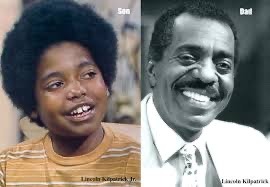
Lincoln Kilpatrick (February 12, 1931 – May 18, 2004) was a film, television, and stage actor.
Born in St. Louis, Missouri, he attended Lincoln University and earned a BA in Drama before he began acting. Encouraged by Billie Holiday, he began his career in 1959 in the Broadway production of A Raisin in the Sun. In the 1960s, he mainly guest-starred in television roles and bit parts in movies. His primary acting talents were showcased in stage and theater work, which he remained active in until his death. He was co-founder of the Kilpatrick-Cambridge Theatre Arts School in Hollywood. He was the first African-American member of the Lincoln Center Repertory Company.
He was married to singer and stage performer Helena Ferguson (1957-2004). They had five children: actor and composer Lincoln Kilpatrick Jr.; writer, director, and actor DaCarla Kilpatrick; actor and director Erik Kilpatrick; actor Jozella Reed; and producer Marjorie L. Kilpatrick. #africanhistory365 #africanexcellence
6 notes
·
View notes